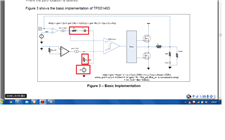Hello,
My customer is looking for an explanation of the D-CAP principle.
I checked and found the document SLVA281b.
There seem to be three flavours being D-CAP, D-CAP+ and D-CAP2
Can someone explain the differences between the three?
Another question is why TI uses many voltage control DCDC's in stead of current mode control.
Is there an advantage of one over the other?


